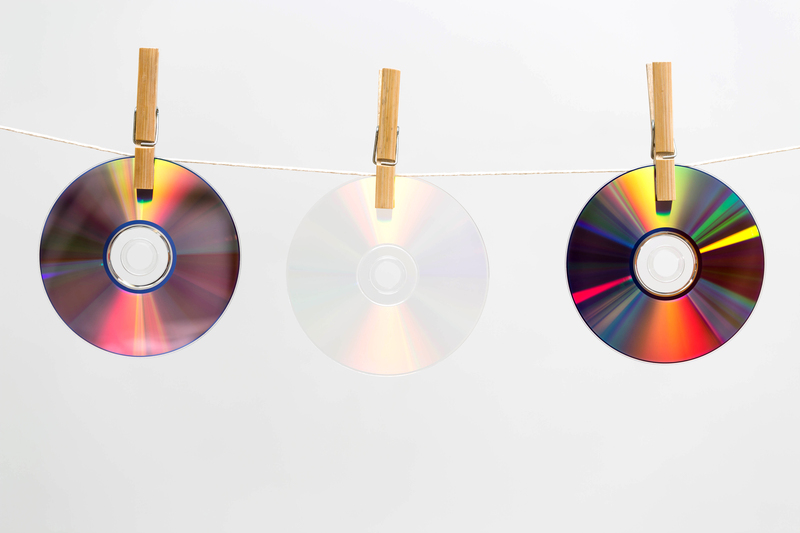Giving Your Pots and Pans a Second Life through Recycling and Donation
Are your kitchen cabinets overflowing with old pots, pans, and cookware you no longer need? Instead of letting those discarded items collect dust, why not consider giving your pots and pans a second life? Properly recycling or donating old cookware not only helps the environment but also supports communities in need. In this comprehensive guide, we'll explore how to recycle old pots and pans, where to donate your unwanted cookware, why eco-friendly disposal matters, and practical tips for turning clutter into positive change.
Why Should You Recycle or Donate Old Pots and Pans?
- Environmental Impact: Recycling pots and pans reduces landfill waste and conserves resources, as most cookware is made from metals like aluminum and stainless steel that are highly recyclable.
- Community Assistance: Donating gently used pots and pans gives families, shelters, and nonprofits access to much-needed kitchenware.
- Minimalism & Decluttering: Clearing out unused kitchen items creates a tidier, more functional home environment.
- Ethical Living: Giving your pots and pans new life supports a circular economy and responsible consumption.
How Do You Know It's Time to Let Go of Cookware?
It's not always easy to part with kitchen items, but if your pots and pans are:
- Warped, cracked, or heavily scratched
- Have damaged or flaking non-stick coatings
- Can no longer heat food evenly
- Have missing handles or lids
It's time to find a responsible way to dispose of them. If they're still in good condition, donation is the way to go. For damaged or broken items, recycling is best.

Understanding Cookware Materials and Their Recyclability
Before recycling or donating, it's important to know what your pots and pans are made of. Most cookware falls into these categories:
- Stainless Steel: 100% recyclable, commonly accepted at metal scrap yards and recycling centers.
- Aluminum: Also highly recyclable; light and rust-proof.
- Copper: Valuable but must be separated from other materials, such as steel or aluminum bases.
- Cast Iron: Extremely durable; recyclable, but heavy to transport.
- Non-Stick (Teflon-Coated): More challenging to recycle due to coatings, but options are available.
- Glass or Ceramic: Often not recyclable through curbside programs, but may be accepted at specialty facilities or art centers.
Check for Local Regulations
Not all recycling facilities accept cookware, especially if coated with non-stick material or if it features plastic handles. Always check with your local waste management center for specific recycling guidelines for pots and pans.
How to Recycle Old Pots and Pans
Step-by-Step Guide to Recycling Cookware
- Assess the Condition: If the pot or pan is badly damaged, recycling is better than donation.
- Remove Non-Metal Parts: Detach plastic, rubber, or wooden handles and any glass lids.
- Sort by Material: Sort stainless steel, aluminum, or copper pans separately. Some scrap yards require this before drop-off.
- Locate a Metal Recycling Facility or Scrap Yard: Many will accept clean, separated metals. Contact them to confirm cookware is accepted.
- Drop-Off: Bring your prepared cookware for recycling. Some facilities may even reimburse you for certain metals!
Note: If your cookware features non-stick coatings, ask your scrap yard if they accept coated pans. Some facilities process them, while others do not.
Other Recycling Options
- Retailer Take-Back Programs: Some kitchenware brands and big-box retailers offer recycling or trade-in programs for old cookware (e.g., Bed Bath & Beyond, Williams Sonoma).
- Community Recycling Events: Local municipalities occasionally host recycling drives that accept pots, pans, and other hard-to-recycle items.
- Creative Upcycling: If full recycling isn't available, consider transforming old cookware into planters, storage containers, or quirky art.
Where to Donate Used Pots and Pans
Donating gently used pots and pans is a meaningful way to give your cookware a second life. Many organizations and individuals would benefit from your unwanted items.
Best Places to Donate Cookware
- Local Charities and Thrift Stores: Goodwill, Salvation Army, and local thrift shops often accept gently-used kitchenware.
- Homeless Shelters and Food Banks: Many shelters and donation centers need pots and pans for communal kitchens or to distribute to families setting up new homes.
- Domestic Violence Shelters: These facilities often assist individuals rebuilding their lives and rely on kitchen donations.
- Habitat for Humanity ReStores: Accept new or gently-used household items, including cookware.
- Community Centers and Churches: Local groups may collect pots and pans for refugee support, community meals, or youth programs.
How to Prepare Pots and Pans for Donation
- Thoroughly Clean: Remove all food residue and stains. Wash and dry each item carefully.
- Check for Good Condition: Only donate pans with solid handles, intact surfaces, and no dangerous rust or sharp edges.
- Group Sets Together: If possible, donate complete sets with matching lids for added convenience.
- Attach a Note or Instructions: For unique cookware (such as woks or cast iron), include use and care information to help the new owner.
Benefits of Giving Your Cookware a Second Life
Your efforts to recycle or donate pots and pans offer numerous benefits for the planet and your community:
- Reduces Waste: Keeps bulky metal and ceramics out of landfills.
- Conserves Energy: Recycling metals saves significant energy compared to mining new materials.
- Supports Sustainable Living: Promotes a culture of reuse and responsible consumption.
- Helps Those in Need: Donated kitchenware empowers families, individuals, and charitable organizations.
- Frees Up Cabinet Space: Decluttered kitchens are more functional and inspiring.
Creative Ideas to Repurpose Old Pots and Pans
If recycling or donation isn't feasible, upcycling your cookware is a fun and eco-friendly alternative. Here are some creative projects:
- Garden Planters: Turn an old pot or colander into a quirky flower pot - simply drill a few drainage holes and add soil.
- Kitchen Storage: Use a deep pan or casserole dish to store utensils, towels, or spices on your countertop.
- Wall Art or Decor: Paint or decorate the bottoms of pans to create unique wall hangings.
- Bird Feeders: A skillet or frying pan can be transformed into a rustic bird feeder with a bit of imagination.
- Candles or Centerpieces: Fill small pots with wax, flowers, or pebbles for charming table centerpieces.
- Children's Toys: Safe, clean pans make excellent drum kits for little ones!
Tips for Extending the Life of Your New and Old Cookware
To minimize future waste, adopt these practices to extend the usability of your kitchenware:
- Read Care Instructions: Always follow manufacturer guidelines for cleaning and cooking temperatures.
- Avoid Metal Utensils: Use wooden, silicone, or plastic tools with non-stick and coated pans.
- Proper Cleaning: Hand-wash when possible and avoid harsh abrasives that can damage surfaces.
- Store Correctly: Use pan protectors or soft cloths to prevent scratches when stacking.
- Repair Rather Than Replace: Tighten handles or replace knobs and lids before discarding an otherwise usable pan.

Frequently Asked Questions about Recycling and Donating Pots and Pans
Can I Put Pots and Pans in My Curbside Recycling?
Usually, no. Most residential recycling programs do not accept cookware because they are made from mixed materials and metals. It's best to take them to a scrap metal recycler.
What About Non-Stick or Teflon Pans?
These pans are more difficult to recycle due to the synthetic coating. Some scrap yards will accept them, but most household recycling services will not. Check with your local scrap metal dealer or household hazardous waste facility for advice.
Can I Donate a Single Pan or Does It Have to Be a Set?
Both options are typically welcomed! While sets are convenient, most organizations will gladly accept individual pieces in good condition.
Will I Get a Tax Deduction for Donating Cookware?
Many registered nonprofit organizations provide a donation receipt for tax purposes. Be sure to ask when you drop off your items.
Conclusion: Make a Difference by Giving Pots and Pans a Second Life
Choosing to recycle or donate old pots and pans is a powerful way to support sustainability, declutter your living space, and help others. Every unwanted kitchen item has the potential to serve again -- whether as a family's first frying pan, a community meal essential, or raw material for new products. Make the commitment today to give your cookware a second life, and inspire others by sharing your eco-friendly journey.
Ready to part with your old cookware? Start by calling your local recycler or donation center and help build a greener, more generous world!
```